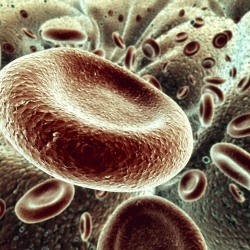
First came bladders. Then pulmonary arteries. Followed by urethras, arteriovenous shunts and tracheas. Now, in another first for the world of tissue-engineered body parts, Swedish surgeons have successfully transplanted a bioengineered vein into a 10-year-old girl suffering from portal vein obstruction.
“This is a very good start for demonstrating what impact regenerative medicine can have on patients by using a biological matrix and seeding it with a patient’s own cells,” says Juliana Blum, co-founder and senior director of business operations at Humacyte, a North Carolina–based company developing bioengineered blood vessels for dialysis patients.
A team led by Suchitra Sumitran-Holgersson at the University of Gothenburg took a 9 centimeter-long snippet of vein from the groin of a deceased donor, stripped it of all cells and then reseeded the resulting hollow tube with stem cells taken from the recipient’s own bone marrow. Two weeks later, the surgeons transplanted the engineered conduit into the young girl. She remained healthy for close to a year, although a second procedure was then needed to lengthen the first graft after the vein started to constrict. Ever since the second transplant, in February of this year, the girl’s energy levels have improved and the blood flow to her kidneys are back to normal.
“The girl is somersaulting now,” says Sumitran-Holgersson, who reported the findings in The Lancet. “Her parents told me, ‘We have a completely different child.’”
Ordinarily, when adults suffer the same problem as the girl who received the tissue-engineered blood vessel—a condition in which the vein that carries blood from the spleen and intestines to the liver is blocked—surgeons opt to transplant a patient’s own vein from the leg. But this option is not feasible for young children because of the potential growth problems that can result from grafting in a still maturing body.
Christopher Breuer, a pediatric surgeon at the Yale University School of Medicine in New Haven, Connecticut, says the study represents an important next step for tissue-engineered technology. “This is a new application,” he notes. “This is the first time a bioengineered vein has been used in the portal circulation.”
